Jaffa
Jaffa is an ancient port city in Israel, mentioned in the Bible and renowned for its association with Jonah, Solomon, and Saint Peter as well as the mythological story of Andromeda and Perseus. There are many interesting attractions in the Old City of Jaffa plus a church, great fish restaurants, and quaint lanes with specialty stores. However, if you follow those meandering lanes downwards you will find yourself coming out on the water’s edge of the actual port. The Jaffa Port underwent a complete facelift in 2012 when it was cleaned up and new businesses moved into the revamped hanger that stands near the water. The dream was to create a food market similar to the ones at Tel Aviv Port and the Sarona complex however the market didn’t really get off the ground. The port failed to become a top destination and is still a hidden gem to most!
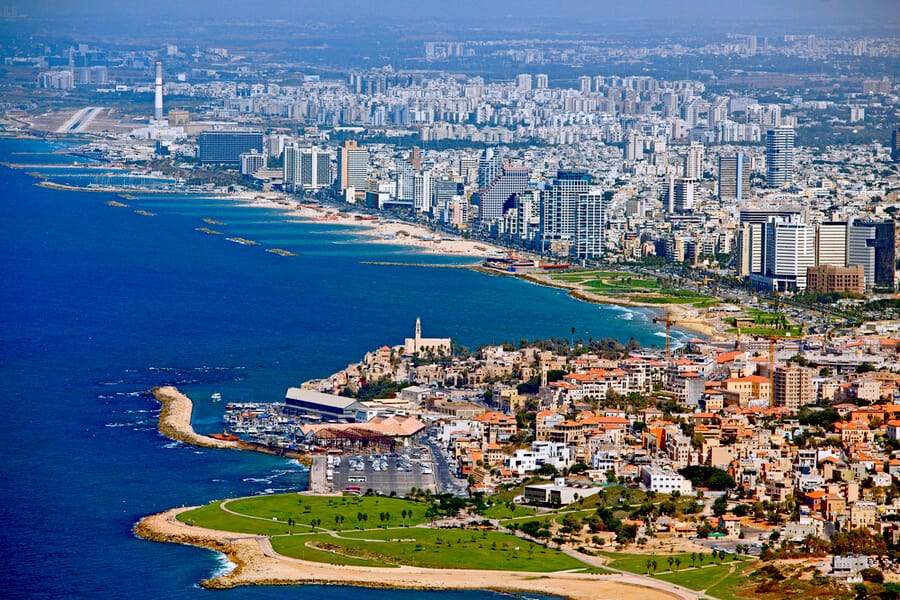
Jaffa aerial view. Photo credit: © Shutterstock
The Old Jaffa
When people refer to Old Jaffa they are talking about the restored ancient city perched on a cliff at the southern end of Tel Aviv’s beachfront promenade. Jaffa Port lies directly below Old Jaffa; a historic gateway to the Holy Land which has also been significantly restored. Both these two Tel Aviv-Jaffa attractions offer endless things to see and do.
For the last 6,000 years, Jaffa Port has welcomed travelers, immigrants, and armies. The city is associated with the legends of Andromeda and the Biblical figures of Jonah and St. Peter. The city has been ruled by Egyptians, Philistines, Alexander the Great, Romans, Napoleon, Muslims, Crusaders, and the Ottomans. Each has left its mark on the city. Today Jaffa is home to a mixed population of Christians, Jews, and Muslims.
Old Jaffa is built from pristine cream-colored stone similar to the Old City of Jerusalem. The windows of Jaffa homes are painted bright blue and window boxes overflow with colorful blooms. Visitors can discover trendy restaurants, picturesque alleyways, historic churches, archaeological remains, and a unique artists’ colony.
When you arrive in Old Jaffa’s central Kdumim Square you will see a magnificent fountain with stone characters representing the zodiac signs. Each of the alleyways in Old Jaffa leading down to the port is named after a zodiac sign. On Kdumim Square you will find the Old Jaffa Visitors Center. Here there is the “Images of Jaffa”, a multi-sensory experience that introduces visitors to the history of Jaffa.

The Jaffa Old City. Photo credit: © Dmitry Mishin
The center also holds archaeological remains from Jaffa’s ancient past. In the restaurants that flank the square, you can find delicious culinary delights from Middle Eastern cuisine and seafood to Yemenite and French food. Some of the restaurants offer brilliant views across the sea all the way to Tel Aviv’s beachfront.From Old Jaffa you can look out to sea and spot Andromeda’s Rock. This group of rocks jutting out of the water is associated with the Greek legend of Perseus and Andromeda. Andromeda had been chained to the rocks as a sacrifice to the sea monster Cetus when Perseus rescued her.
Attractions in Old Jaffa include the Home of Simon the Tanner where St. Peter is said to have spent the night. While here he had a dream which was interpreted as a message from God telling Peter that non-Jews should be welcomed into Christianity.
Jaffa is the site of Ramses Gate which has survived 4,000 years since Egyptians ruled Jaffa. The intricately carved gate was once part of a grand Egyptian palace. Make a wish on the Wishing Bridge as you enter Park HaPisga. In the park, there are several works of art and canons left here by Napoleon in 1799. Visit St Peter’s Church built in 1654 and dedicated to the saint who visited Old Jaffa.
The narrow stone alleyways of Old Jaffa are lined with over 50 galleries, design stores, and art studios. Among the most well-known galleries, there is Adina Plastelina, the Ilana Goor Museum, and a gallery of Ethiopian art. Artists live and work here, displaying and selling their creations to the public.
The Antiquities Museum of Tel Aviv-Jaffa is housed in an Ottoman-era building. Here you can see archaeological remains excavated in Jaffa. When the sun goes down Old Jaffa comes alive with restaurants and cafes. People come to Old Jaffa at night to enjoy the cool sea breeze, beautiful surroundings, and the view across the sea to Tel Aviv’s glittering lights.
Discover Jaffa Port
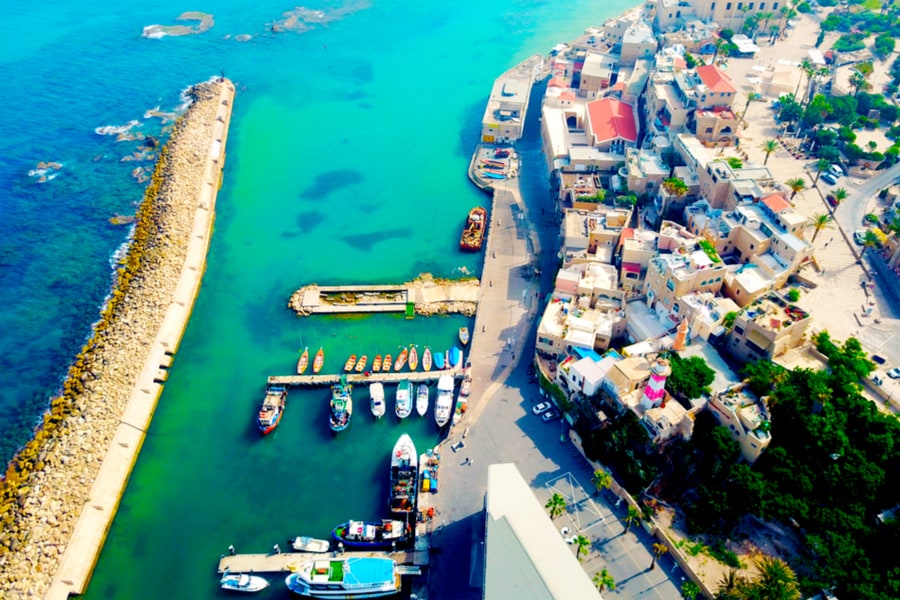
The Jaffa Port. Photo credit: © Shutterstock
It is possible to walk from Tel Aviv's beach promenade all the way to Jaffa Port. At the southernmost point of Tel Aviv is the Charles Clore Park. From here the Sea Wall Promenade leads you all the way to the old port. Jaffa Port has Old Jaffa as a backdrop; built on the cliffs overlooking the water. Today the port no longer welcomes pilgrims and travelers by water but it is a port for fishermen and sailboats.
As you immerge from the lane which leads down to the port you will be just a few meters from the water. A jetty juts out into the water where you can get brilliant views of the Tel Aviv coast. Local boys like to show off their acrobatic skills jumping off fishing boats into the water and couples often come down here to get their pre-wedding photos taken. After you’ve enjoyed the waterside you can continue exploring the businesses along the water’s edge.
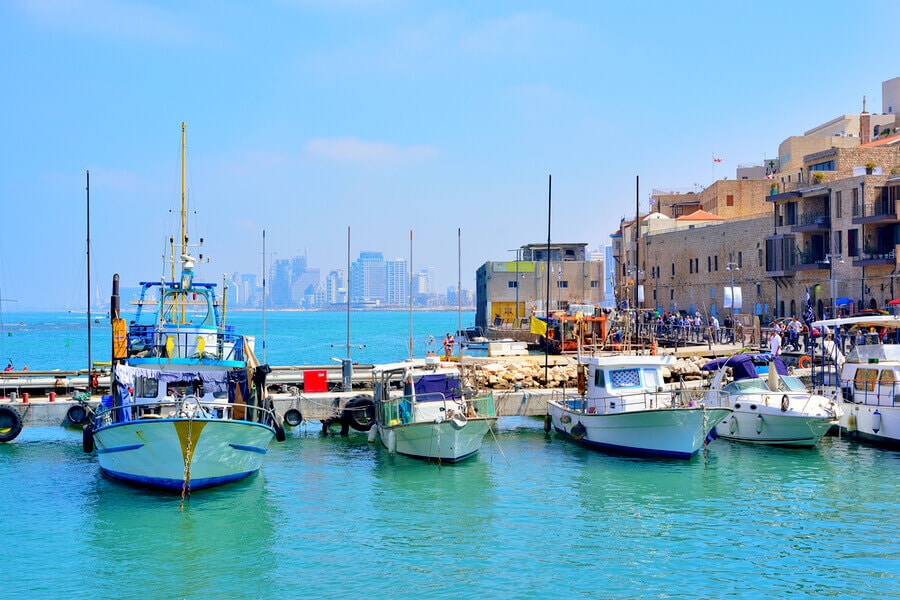
The boats at Jaffa Port. Photo credit: © Shutterstock
The NaLagat (Please Touch) Center is run by and for the hearing and visually impaired. The center has a theatre where you can see performances by hearing-impaired actors about their challenges. There is also a restaurant called Black Out in the center where the diners sit in the dark and are served by visually impaired waiters. The center holds workshops and activities to teach about how handicapped people experience the world.In the large modern hanger alongside the NaLagat Center there are a number of businesses, an ice-cream shop, and fine dining restaurants. The best thing to eat if you dine here is fish; specialty fish restaurants use fish which was probably caught in the waters you see from the windows. There are also several art galleries where local artists display their creations.
There are several retail outlets including the Women’s Courtyard at The Port where Israeli designer clothing is sold at outlet prices. On Fridays in the summer from 10 am to 5 pm there is the free live entertainment; market stalls; family activities and yoga lessons all free or for a small fee. The “Almina” Theatre presents children’s theatre productions for a small fee and offers workshop activities for kids after the show.
Jaffa Flea Market
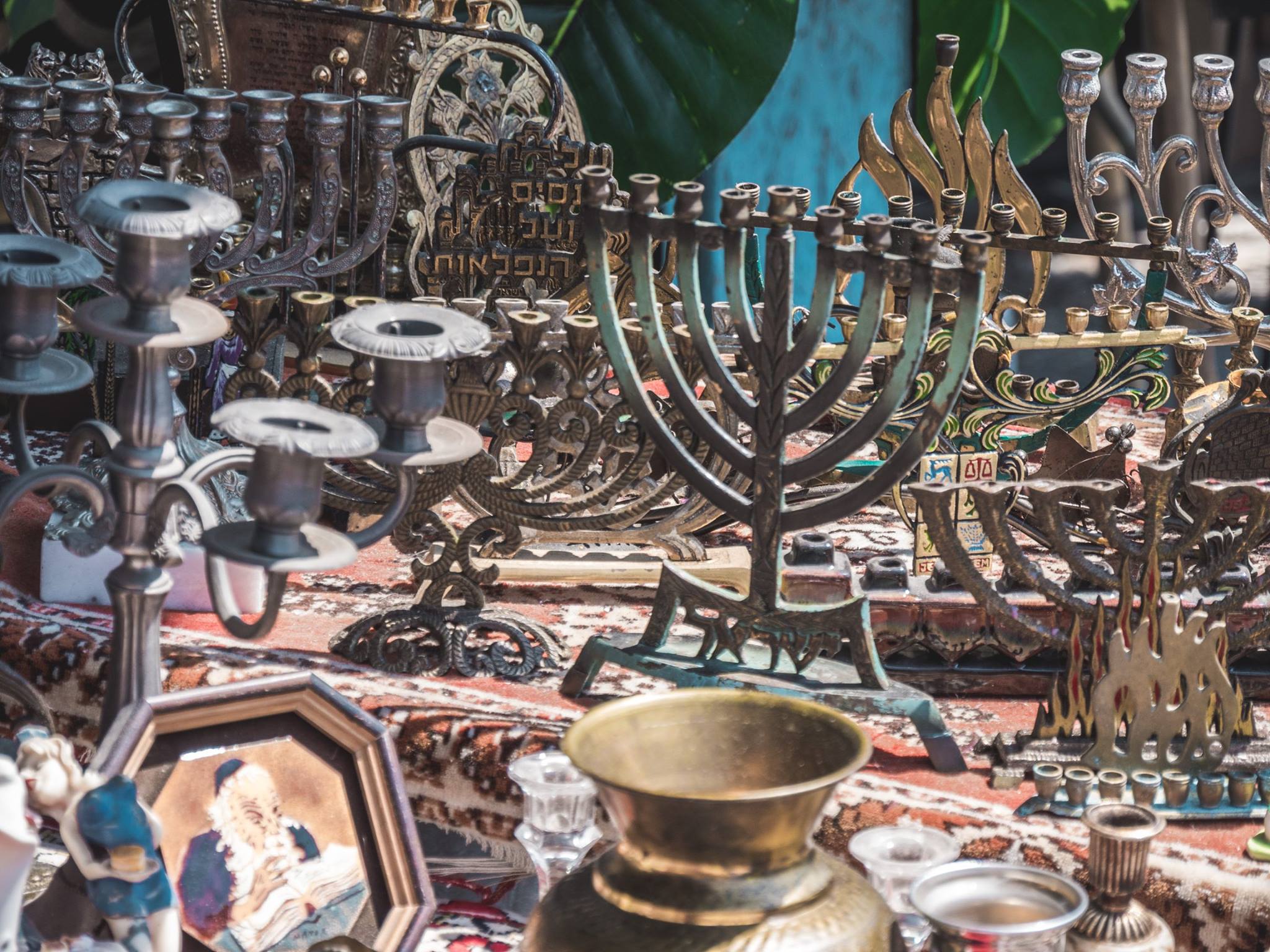
Jaffa flea market. Photo credit: © Dmitry Mishin
To get a feel of a real Middle Eastern character there is nothing better than a tour in one of Israel’s traditional markets or shuks. Perhaps one of the most atmospheric is the Jaffa shuk. The Jaffa flea market consists of several parts. There is a long street where each storefront spills onto the sidewalk selling antiques, some genuine junk.
Here many avid antique collectors scourge the second-hand furniture stores, Persian carpet stores, and bric-a-brac stores which sell mainly old things rather than antique things. One street over there is a covered bazaar, a narrow row of vendors sell from hole-in-the-wall stores an assortment of clothing, old and new, jewelry, and second-hand goods.
The clothes and other items for sale hang above your head and on every available stretch of wall. Outside in the open air, the Jaffa market continues with household goods, DIY equipment, ceramics, toys, musical instruments, and even the kitchen sink. You will also find local places to eat in this area which is safe to walk about in even if you are on your own.
The Jaffa Shuk HaPishpeshim (flea market) is a vibrant, dynamic area with lots to see and many exciting stores and stalls. In the last few years, the area has become not only a fun and unique place to shop and people watch but also a hidden gem for foodies. Among the junk and antiques are several outstanding restaurants some of which are housed in historic buildings and serve both local and international food. Here are just a few of the many Jaffa Flea Market’s finest dining establishments.
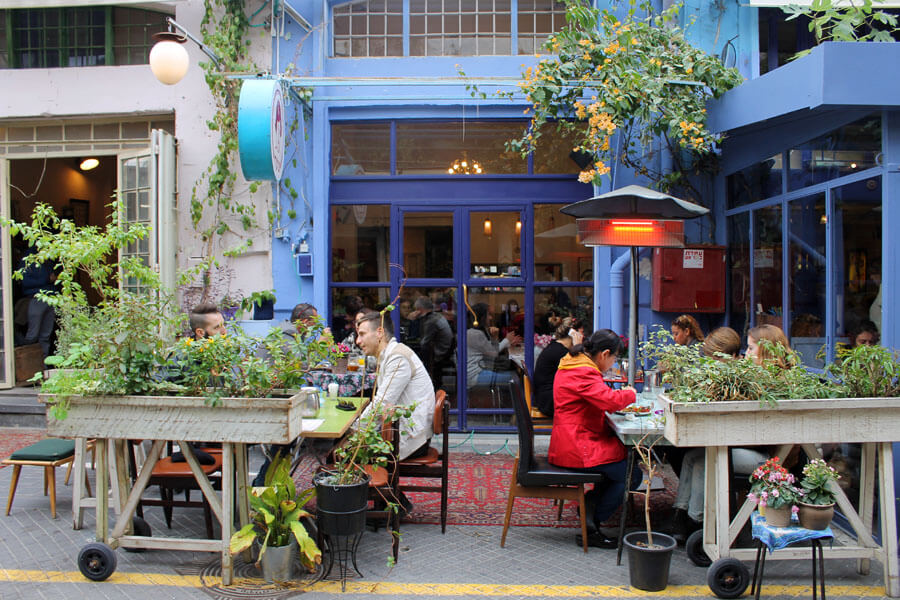
Shuk Hapishpeshim restaurant, Jaffa. Photo credit: © Shutterstock
- Puaa, 8 Rabi Yohanan - This unique restaurant/café is in the heart of the flea market. It was established in 1999 and is named after the owner. The place is magical, with décor featuring many authentic antiques and memorabilia including the furniture, pictures on the walls, and tableware. The menu is unpretentious and the food wholesome and homely yet unique and innovative. There are dishes like broccoli and cashew pasta, spinach with raw tahini and faro, and date syrup salad. There is a good selection of Israeli boutique wine. On Tuesday nights you can get amazing fish and seafood cooked on the grill situated on the outside porch and in winter there are live performances on Thursday evenings.
- Fleamarket, 7 Rabi Yohanan - The décor of this restaurant will take your breath away. The eclectic furniture comes from flea markets in Israel and abroad; the ceilings are high and the walls feature exposed brick and dark wood. Fleamarket has a large bar with an open kitchen. The restaurant is managed by top Israeli restaurateurs led by Shy Gurevitch. Fleamarket serves mainly seafood and Asian menu with several local and European dishes. The restaurant has a breakfast, brunch, and evening menu. At Fleamarket they give some classic Israeli dishes a gourmet twist like adding truffle to Israeli shakshuka. They also give an Israeli twist to some International classics like adding mangold to eggs Benedict. The menu reads like a European fine dining establishment with dishes like beef Carpaccio, sea bream tartar, and mushroom and truffle risotto. There are kid’s dishes and vegetarian dishes as well as a good selection of alcohol and cocktails.
- Sifo, 3 Nachman Street - This is one of the more recent additions to the Jaffa flea market culinary scene yet it has been attracting the attention of local foodies. It is located down a narrow lane full of character. The restaurant was opened in 2011 and is run by Chef Idan Mezner. As the name implies they specialize in seafood – si (sea) fo (food). The flavors and styles of the dishes are diverse including fusion dishes that blend Middle Eastern flavors with international flavors. Diners have the option of eating from the cold kitchen, hot kitchen, or the chef specials and desserts. Popular dishes on the menu include the fish patties with Ethiopian tahini, the red mullet fish in Arak, and the kubbeh soup with seafood.
- Leimech, 11 Amiad Street - In among the market stalls is this modest street bar. The bar was named after Noah’s father in the Bible who lived to an incredible age of 777; maybe because he took things easy and enjoyed a good drink like this bar’s patrons. The bar serves Thai beer on tap and simple dishes from the Far East and the Middle East. The bar often hosts live musical performances.
- Yasso-Saloniki, 4 Olei Zion - This Greek restaurant celebrates the Greek culture in every way – from the décor and music to the menu. On the walls are framed photos of the owner and his family plus some celebs that have eaten here.
- Onza, 3 Rabbi Hanina Street, Shuk HaPishPeshim - The tables of this popular seafood and Greek restaurant spill out onto the cobbled streets of the market. It is always buzzing with people coming here for the food, music, and atmosphere. Indoors there is a large bar and a few tables while on an upper level you’ll find an area for large groups. The atmosphere is created by great music, dim lighting, and an upbeat vibe. Food is prepared by Chef Yossi Shitrit and on the menu, you’ll find fish, seafood, meat, and vegetarian dishes. Don’t miss happy hour on Saturdays from 4 pm to 6 pm.
- Charcuterie Restaurant, 3 Rabbi Hanina - You’ll smell the delicious aroma of BBQ meat before you even reach this restaurant. The chairs and tables are spread out over the cobbled stones of a narrow lane as diners wait to sample delicious smoked and barbecued meat as well as handmade sausages. If you’re a confirmed carnivore then this is the place for you. If you prefer fish or pasta you can find some non-meat dishes on the menu as well. The best time to come here is on weekends after 10 pm when the music is loud and the crowd turns the place into a street party.
- Lima Nippo, 6 Rabbi Tanhum - Where Japan meets Peru! Lima Nippo is a sleek fine dining establishment with refined décor and artistically presented food. The menu includes Japanese and Peruvian fusion dishes, a new trend in the culinary world. When Japanese immigrated to Peru in the 20th century the Nikkei cuisine was born. Dishes on the menu include pineapple duck, beef tartar with miso.
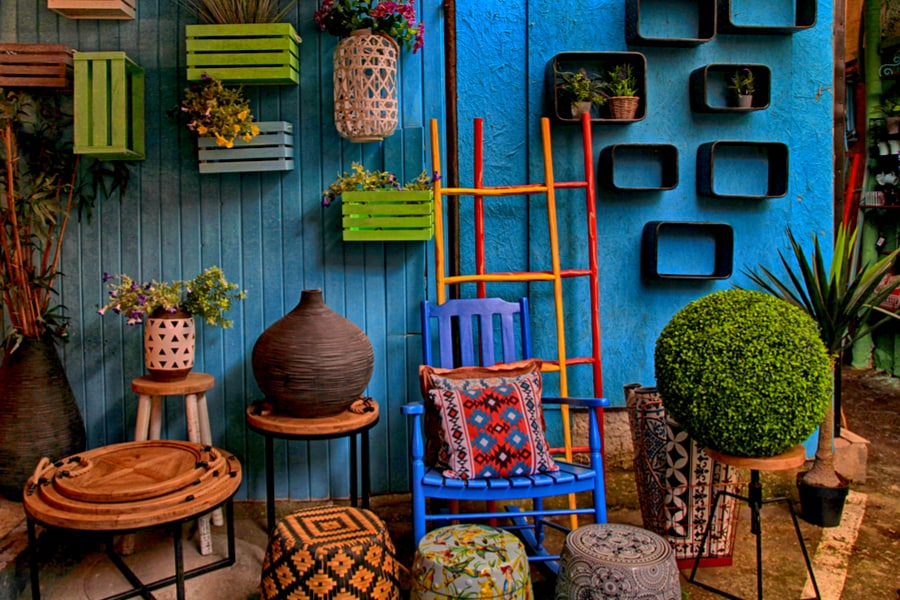
Jaffa Old City House decoration. Photo credit: © Shutterstock
Jaffa flea market is not only a gourmet destination but a one-of-a-kind experience and it's better to explore it with a guided tour. It is possible to combine an excursion to Jaffa with one of various Tel Aviv trips.
 Login / Register
Login / Register
 Contact Us
Contact Us
 Certificate of Excellence
Certificate of Excellence Guaranteed Departure
Guaranteed Departure Low Prices Guaranteed
Low Prices Guaranteed 24/7 Support
24/7 Support




